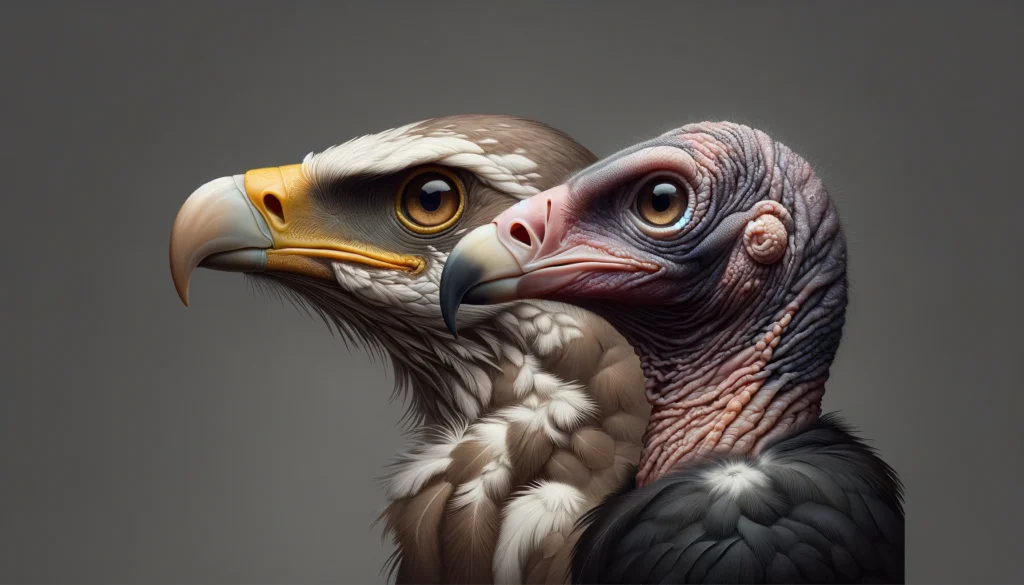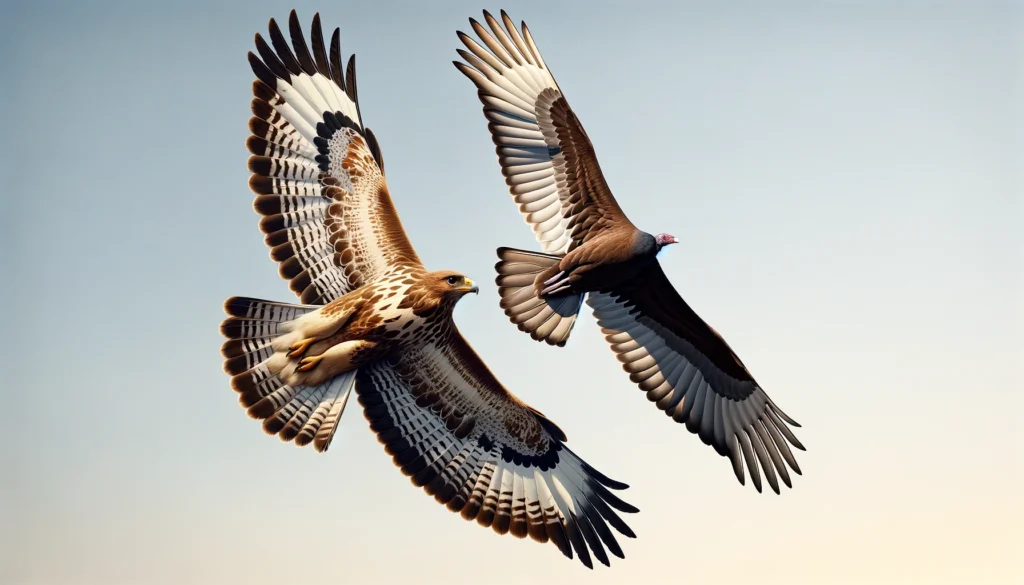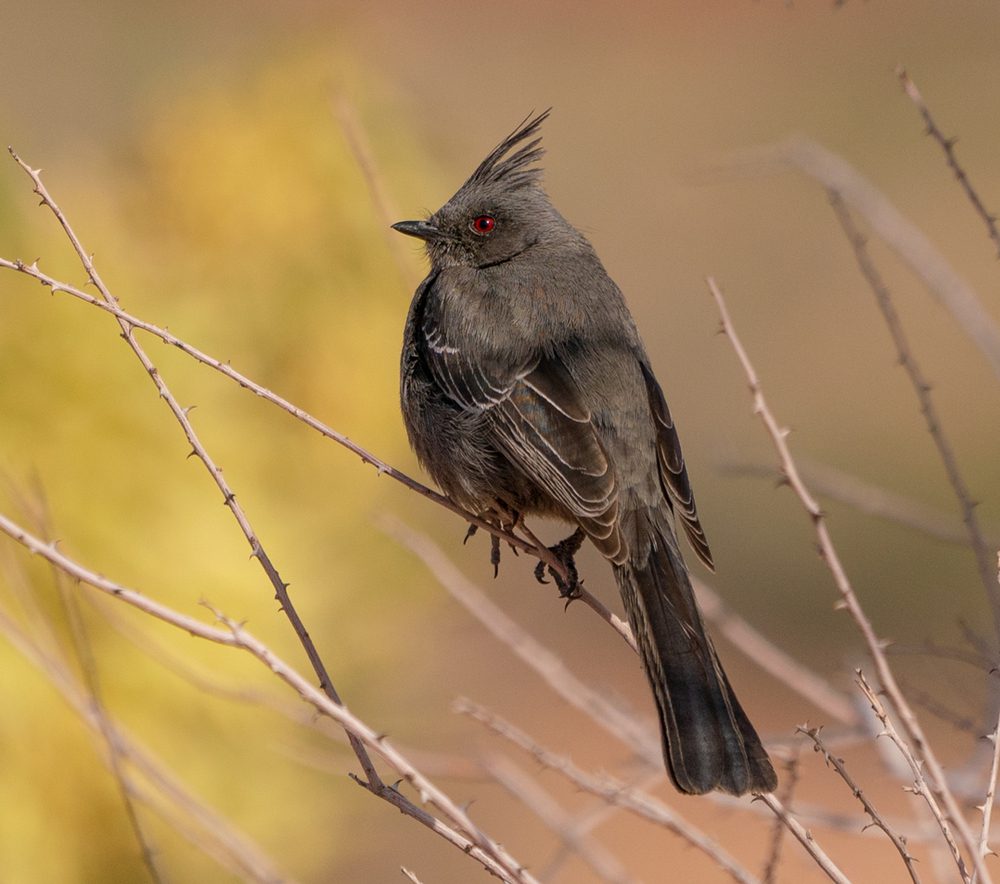Buzzard vs Turkey Vulture – You may be surprised to learn that buzzards and turkey vultures are often mistaken for each other due to their similar appearance. However, there are distinct characteristics that can help in accurately identifying and differentiating the two species. In this article, I will explore the differences between buzzards and turkey vultures, providing valuable insights to aid in their identification and comparison.
Key Takeaways:
- Buzzards and turkey vultures are often confused due to their similar appearance.
- Understanding their occurrence in a specific region is crucial in differentiating the two species.
- Examining head characteristics, wing patterns, plumage, size, and behavior can help in accurate identification.
- Buzzards, or black vultures, have a dark-gray head, while turkey vultures have a red head.
- Buzzards have all-black wings with silver-gray patches, while turkey vultures have bicolored underwings.
Table of Contents
Determining the Occurrence in the Region
In order to accurately identify buzzards and turkey vultures, it is crucial to determine whether both species occur in the region you are observing. Understanding their range can greatly assist in distinguishing between the two. While black vultures, also known as buzzards, are more commonly found in the southern states of the US, turkey vultures have a wider range and can be seen throughout the US and southern Canada. Being familiar with their respective ranges is key to successful identification.
By knowing the general distribution of buzzards and turkey vultures, you can narrow down the possibilities when encountering these birds in the field. Here is a comprehensive overview of the range of each species:
| Buzzard (Black Vulture) | Turkey Vulture |
|---|---|
| Abundant in the southern states of the US | Found throughout the US and southern Canada |
As shown in the table above, black vultures (buzzards) are predominantly found in the southern US, while turkey vultures have a wider distribution, extending from the US into southern Canada. This information can serve as a fundamental starting point for distinguishing between these two species.
Buzzard vs Turkey Vulture Head Characteristics

When it comes to differentiating between buzzards and turkey vultures, head characteristics provide a quick and distinctive clue. By examining the appearance of their heads, it becomes easier to identify these two species.
Buzzards: Also known as black vultures, buzzards have a dark-gray head with a thin black bill. This combination of colors creates a striking contrast against their plumage. The bill, although thin, is powerful and effective in tearing apart carrion.
Turkey Vultures: In contrast, turkey vultures possess a red head and a white bill with a strong hook. The vibrant red color of their bare head is a noteworthy feature, drawing attention to their unique appearance. The white bill, ending in a sharp hook, assists in scavenging carrion efficiently.
These distinct head characteristics, including color and shape of the bill, play a pivotal role in distinguishing between buzzards and turkey vultures.
It’s important to pay close attention to these differences when observing these birds in the wild or studying them for research purposes. While the head characteristics provide valuable clues for identification, there are other physical features and behaviors that can further aid in distinguishing between buzzards and turkey vultures.
Wing Patterns in Flight

When differentiating between buzzards and turkey vultures, their wing patterns in flight are crucial distinguishing factors. While both species have wings adapted for soaring, their wing patterns display distinct characteristics.
Buzzard Wings:
Buzzards exhibit all-black wings with silver-gray patches on the tips, creating a unique and eye-catching appearance. These silver-gray patches act as identifying markers, helping to differentiate buzzards from turkey vultures.
Turkey Vulture Underwings:
Turkey vultures, on the other hand, showcase bicolored underwings. These underwings consist of silver-gray feathers that contrast with the black leading edge of their wings. This contrast in coloring is distinct to turkey vultures and aids in their identification.
Observing these distinctive wing patterns is easiest when the birds are soaring through the sky, as their wings are fully extended. By paying attention to these patterns, you can differentiate between buzzards and turkey vultures with confidence.
Plumage and Perched Appearance
When the birds are perched, their plumage and overall appearance can provide further clues for identification. Buzzards, or black vultures, have entirely black plumage, a chunky body, and longer legs. Turkey vultures, on the other hand, have dark brown plumage with lighter-edged feathers, a slender body, and shorter legs. These differences in plumage and physical characteristics are helpful in telling the two species apart.
When perched, the differences in plumage and physical characteristics of buzzards and turkey vultures become more apparent. The entirely black plumage of the buzzard contrasts with the dark brown plumage and lighter-edged feathers of the turkey vulture. Additionally, the buzzard’s chunky body and longer legs stand out in comparison to the turkey vulture’s slender body and shorter legs.
These distinct features make it easier to differentiate between buzzards and turkey vultures, even when they are not in flight. Understanding the plumage and perched appearance of these birds is essential for accurate identification in the field.
Size and Behavior
Size and behavior are important factors to consider when differentiating between buzzards and turkey vultures. Let’s explore the contrasting characteristics in more detail.
Size
When it comes to size, there is a slight difference between buzzards and turkey vultures. Buzzards, or black vultures, have a wingspan of about 4.7 feet, while turkey vultures have a slightly larger wingspan of about 5.7 feet. This variance in wingspan can be useful in identifying the species.
Behavior
The behavior of buzzards and turkey vultures also sets them apart. Buzzards are more commonly found near human settlements, often perching on utility poles and roosting next to buildings. They have adapted to living in close proximity to humans and may even scavenge for food in urban areas.
Turkey vultures, on the other hand, are shy birds that tend to avoid human interaction. They typically roost at a distance from human settlements and prefer more secluded areas such as forests or open fields. Their cautious nature and preference for undisturbed habitats contribute to their distinct behavior.
| Buzzard (Black Vulture) | Turkey Vulture | |
|---|---|---|
| Wingspan | Approximately 4.7 feet | Approximately 5.7 feet |
| Preferred Habitat | Near human settlements | Secluded areas away from human settlements |
Understanding the size and behavior differences between buzzards and turkey vultures can greatly assist in accurate identification.
Conclusion
To tell buzzards and turkey vultures apart, you just need to pay attention to a few key things. First off, where they hang out is a big hint. Buzzards are usually found in the south of the US, but turkey vultures can be seen in more places. Look at their heads too – buzzards have dark-gray heads with slim black bills, but turkey vultures have red heads with a white bill that has a noticeable hook.
Also, check out how their wings look when they’re flying. Buzzards sport all-black wings with some gray at the tips, while turkey vultures have a cool two-tone look with gray on the bottom and black on the edges. Don’t forget to compare their size, how they look when they’re just chilling, and how they act, because those details can also help you figure out who’s who.
By spotting these differences, you’ll get better at telling these birds apart, which is awesome for enjoying and understanding the wildlife around us.
We recommend you also uncover this turkey vulture vs black vulture fact article.





